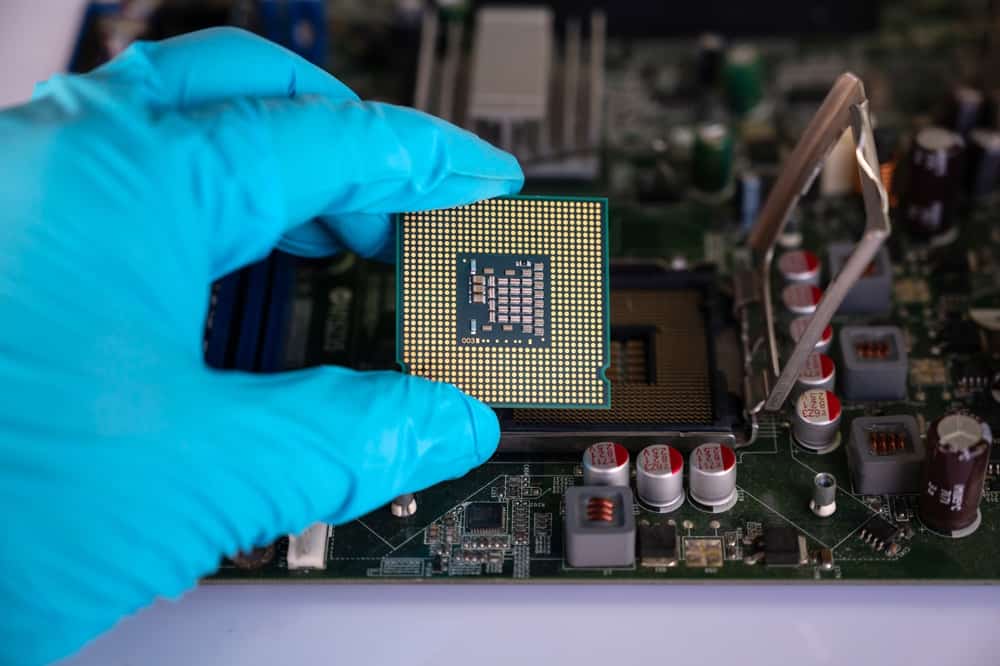
Processors are the critical elements for embedded systems
Today, there is a tremendous amount of interest and excitement in artificial intelligence or AI. This includes the electronics industry, where AI for PCB design implementations are helping to drive the automation of complex or tedious tasks to aid engineers and improve efficiency. The enabler of these software innovations is the microprocessor, which has a long history as the driver of applications of embedded systems.
Common Applications of Embedded Systems
As the name implies, an embedded system is typically an internal element of a larger device or system. In many cases; however, the embedded system provides some level of control over the larger system’s operation. There are many embedded system examples of this type of integration across industries, including the applications shown below.
|
APPLICATIONS OF EMBEDDED SYSTEMS BY INDUSTRY |
|
|
INDUSTRY |
APPLICATIONS |
|
Aerospace |
Motor controllers, thermal control system (TCS), flight management |
|
Automotive |
Anti-lock braking system (ABS), 4WD systems, EV battery management system (BMS) |
|
Transportation |
GPS, inertial guidance systems, railroad traffic management |
|
Industrial Control |
Motor drivers, Assembly line monitoring, data acquisition (DAQ) |
|
Medical Devices |
MRI machines, CT scanners, PET imaging |
|
Communications |
Network switches, routers, GPS receivers |
|
Financial Services |
Point-of-sale(POS) equipment, ATMs, embedded finance implementation |
|
Personal Fitness |
Treadmill, fitness tracker, wearable power management, |
|
Household |
Air conditioners, microwaves, washing machines |
|
Consumer Electronics |
TVs, video game controllers, mobile phones, |
As shown above, the applications of embedded systems are extensive and include common and special use products. Embedded systems are also critical elements for smart technology; including IoT and IIoT implementations.
Embedded systems may be classified in many ways. A popular scheme is according to performance and functionality requirements, where scale is a major defining attribute. Regardless of application, most embedded systems share common characteristics that are best understood by examining the embedded system architecture.
Embedded System Architecture
The figure below illustrates a general architecture for an embedded system design.
General architecture of embedded system
As shown above, the most important component is a dedicated microprocessor that interacts or communicates with a set of peripheral devices. In this case, there are sensors and a keypad input along with an RF and organic light emitting diode (OLED) outputs. It is important to note that embedded systems are typically self-contained systems that perform a specific function or functions. It is likely that your embedded system architecture may be similar to the one described here; nevertheless, for the best results there are specific considerations that must be taken into account.
Optimizing Your Embedded Systems Design
Embedded systems range from simple to highly complex. Coupled with the fact that embedded systems are commonly used in critical systems, where autonomous operation and reliability are required, necessitate that guidelines, as listed below, are followed when designing these boards.
|
PCBA Embedded Systems Design Guidelines
The most important part of your embedded system is the microprocessor, which should be selected based on the complexity and scale of your design. For example, 8-bit processors will likely work great for simple or single function designs. However, for complex systems with high I/O counts, multiple signal types, or several peripherals, fast, high performance devices may be required. For these and all components, you should employ component library best practices to ensure accurate CAD models, avoid supply chain problems and avoid low quality and/or counterfeits.
Many embedded systems operate in hazardous environments or where reliable operation is critical. A common application is automotives where vibration, motion, high temperatures, or safety feature failure can result in system damage, an accident or even fatality. Therefore, reliabie operation within the installation environment must be a premium design concern.
Embedded systems not only include software and hardware, but interact with or control other devices. In many cases, the systems are electromechanical where multiple designers are involved. For the best design, the institution of strategies that support and promote ECAD and MCAD integration should be employed. |
Following the guidelines above will aid you significantly in establishing the best workflow and creating a design that satisfies the objectives for your embedded system application.
If you’re looking for CAD models for common components or important application of embedded systems design information, Ultra Librarian helps by compiling all your sourcing and CAD information in one place.
Working with Ultra Librarian sets up your team for success to ensure streamlined and error-free design, production, and sourcing. Register today for free.